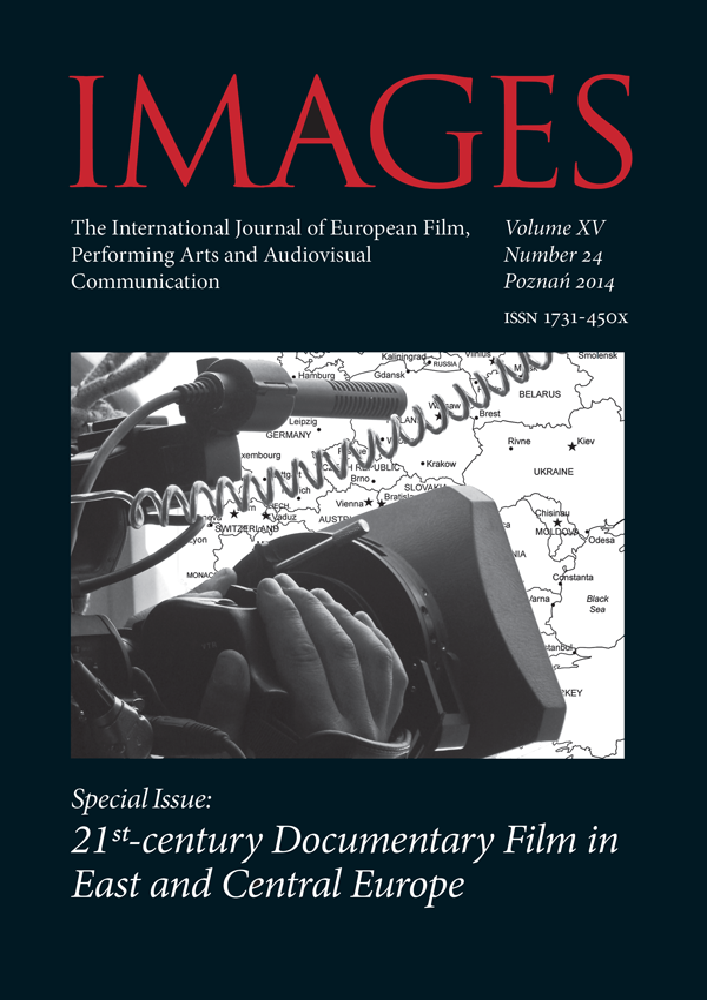Abstrakt
In his documentary Declaration of Immortality, Marcin Koszałka intentionally refers to the style of Wojciech Wiszniewski. Visual creativity is strongly exposed here, both in the style of fi lming and the presentation of the hero. Th e main character in the fi lm, Piotr Korc zak, reminds of the monument-like heroes from Wiszniewski’s fi lms, like protagonist from Wanda Gościmińska. A Weaver Koszałka fi lmed the scenes in the Potocki Palace in Krzeszowice in the manner of Wiszniewski’s long tracking shots. Visual creativity in Koszałka’s and Wiszniewski’s fi lms encompasses the staging, precise frame composition, and their intentional artifi ciality, which does not nullify the documentary their nature. Form in the works of the directors of Primer (Wiszniewski) and Declaration of Immortality (Koszałka) interacts more or less with the spirit of Stanisław Witkiewicz’s art. Koszałka, like Wiszniewski, ‘dismantles’ reality, exposing the illusion of cinema to present a guru of mountain climbing (Korczak) as a ‘hostage of immortality’. Th e lonely hero from Wiszniewski-like staged scenes in Declaration of Immortality is presented as an ‘outgoing star’ whose fame has passed, giving way to alienation or a sense of failure. Th e tension from Declaration of Immortality emerges
from the contrast between the way of fi lming (heroic style), and the meaning of particular scenes. Th e cinema of Wojciech Wiszniewski includes symbols, metaphors, and allegories. Th is artistic conception goes well with Marcin Koszałka’s concept of cinema, which – since the making of Existence (2007) – has become more and more symbolic, incorporating Baroque-like formal ideas based on strong contrasts to evoke ‘cognitive discomfort’ in the viewer.
Bibliografia
Entry: ‘creation documentary’ in: Encyklopedia kina [Encyclopaedia of the Cinema], ed. T. Lubelski, Biały Kruk, Kraków 2010, p. 256.
http://wspinanie.pl/2010/06/wala-pieknoduchom-szalony-o-deklaracji-niesmiertelnosci/ [accessed: November 9th 2013].
The opening of Declaration of Immortality – an interview with Marcin Koszałka at: http://wspinanie.pl/2010/05/premiera-deklaracji-niesmiertelnosci-wywiad-z-marcinem-koszalka/ [accessed: November 9th 2013].
Ja pięknych rzeczy po prostu nie widzę [I simply do not see beautiful things] Marcin Koszałka talksto Ewa Szponar, at: http://film.onet.pl/wiadomosci/ja-pieknych-rzeczy-po-prostu-nie-widze/k7hbt [accessed: November 18th 2013].
W. Wiszniewski, “O potrzebie powrotu do pojęć podstawowych” [On the Need of Going Back to Fundamental Concepts], Ekran 1975, no. 34, p. 3.
W. Kopaliński, Słownik symboli [Dictionary of Symbols], Wiedza Powszechna, Warszawa 1991, pp. 100–101.
<http://wspinanie.pl/2010/06/deklaracja-niesmiertelnosci-recenzja>[accessed: November 9th 2013].
K. Mąka-Malatyńska, Wanda Gościmińska Włókniarka – demontaż filmowej nowomowy [Wanda Gościmińska, a Spinner – disassembly of film newspeak], in: Wojciech Wiszniewski, ed. M. Hendrykowski, Wydawnictwo Naukowe UAM, Poznań 2006, p. 116.
Granicę wyznacza sobie sam twórca, [The Border is Set by the Artist Himself] at: http://film.interia.pl/raport/zwierzyniec2009/wywiady/news/granice-wyznacza-sobie-sam-tworca,1355054,3764,3 [accessed: November 8th 2013].
M. Koszałka, Sztuka ekranowana [Screened Art], http://ninateka.pl/film/sztuka-ekranowana-marcin-koszalka [accessed: November 11th 2013].
Licencja
Copyright
© 2014 Uniwersytet im. Adama Mickiewicza w Poznaniu
OPEN ACCESS
